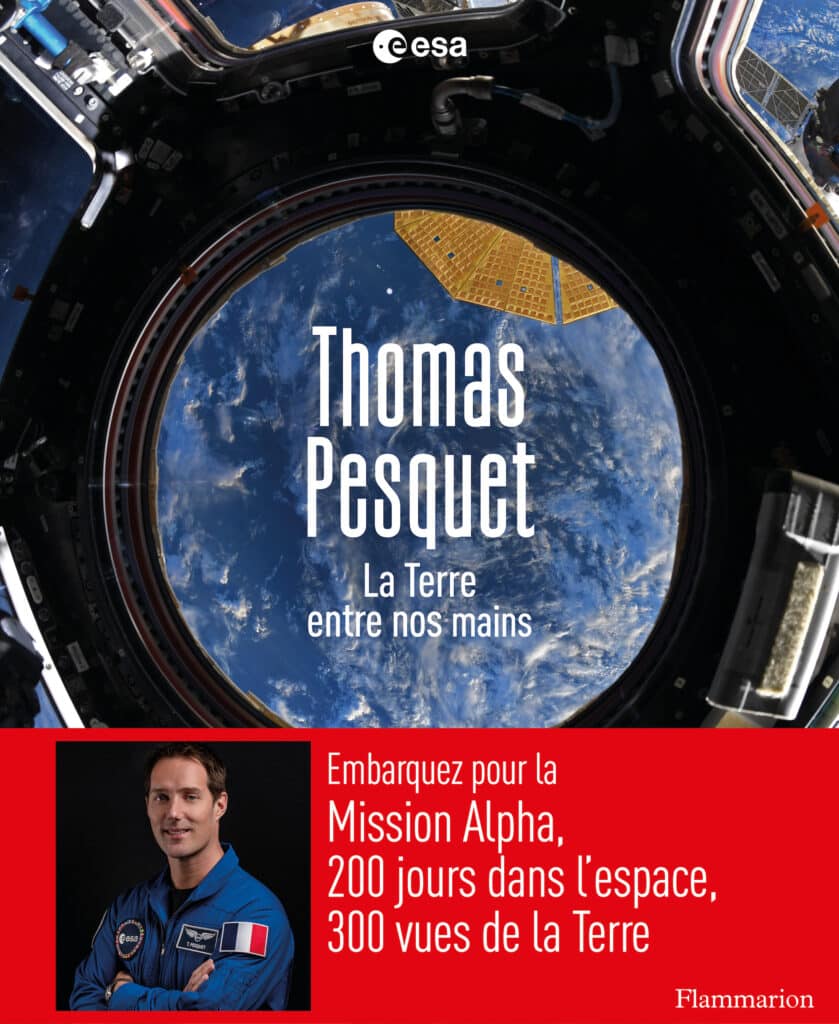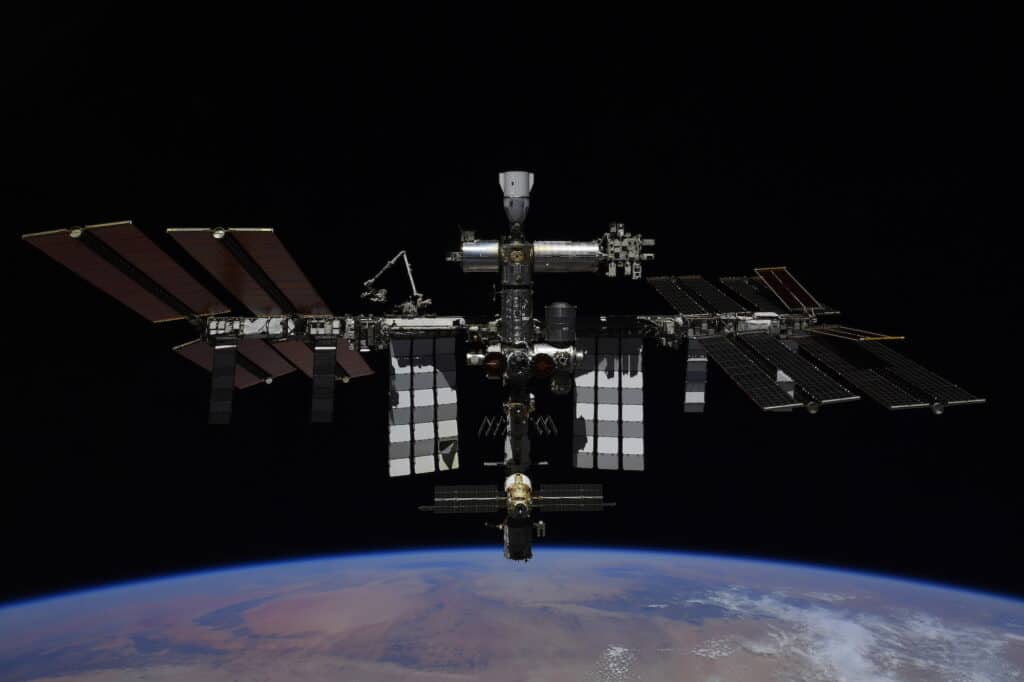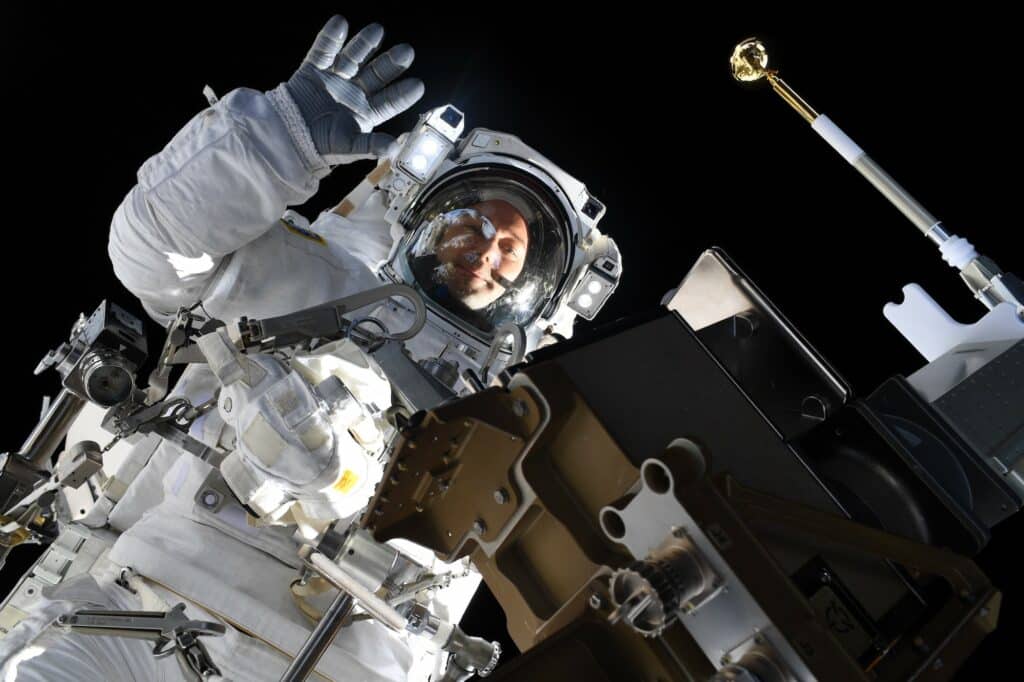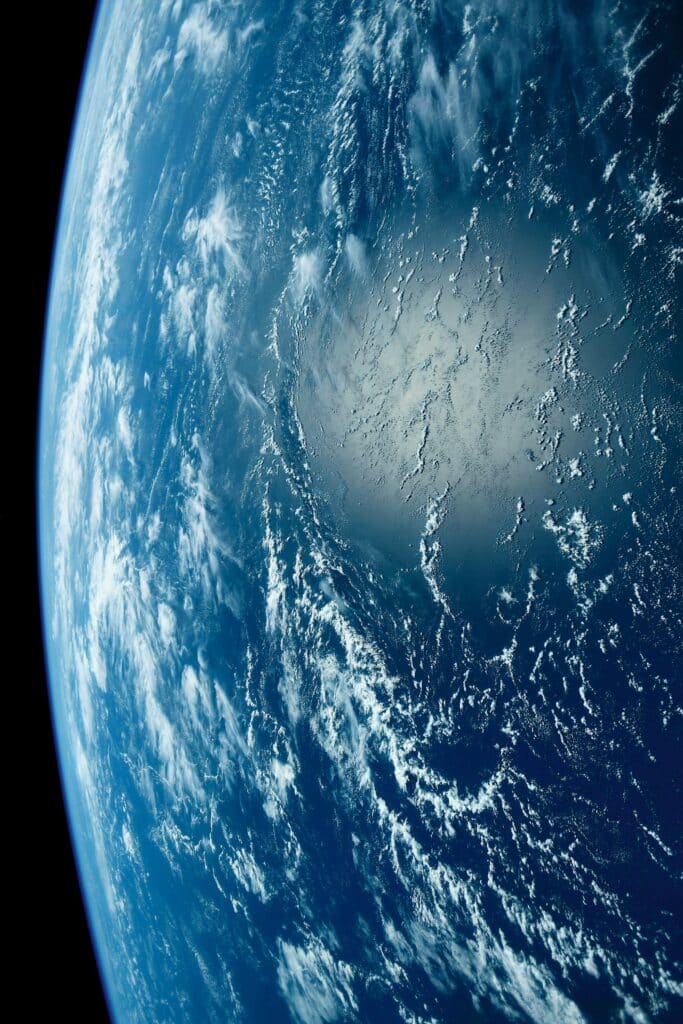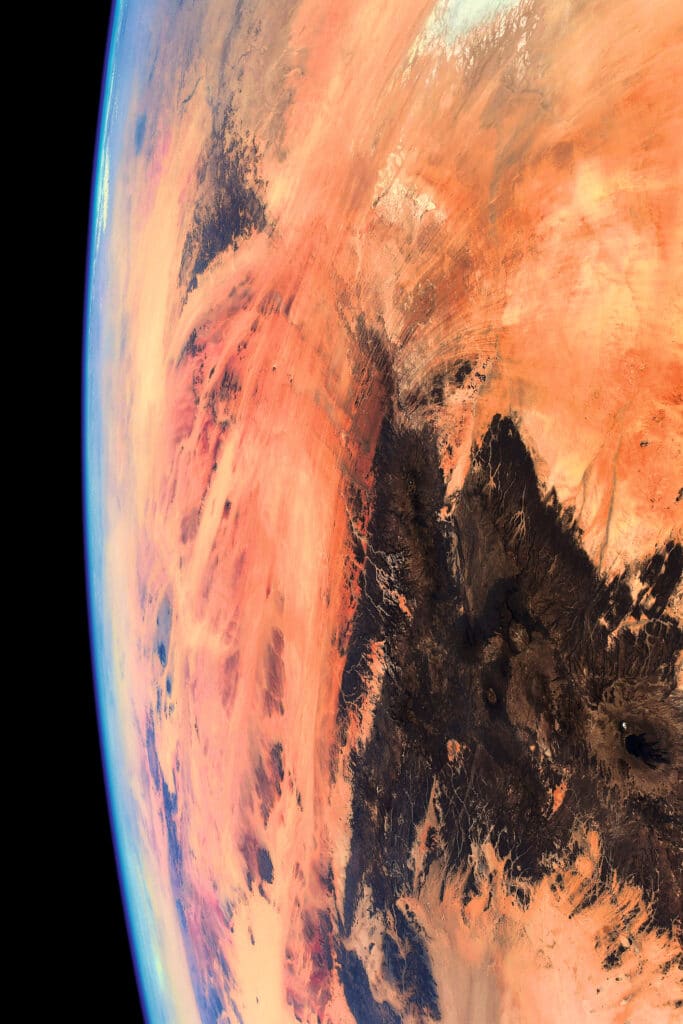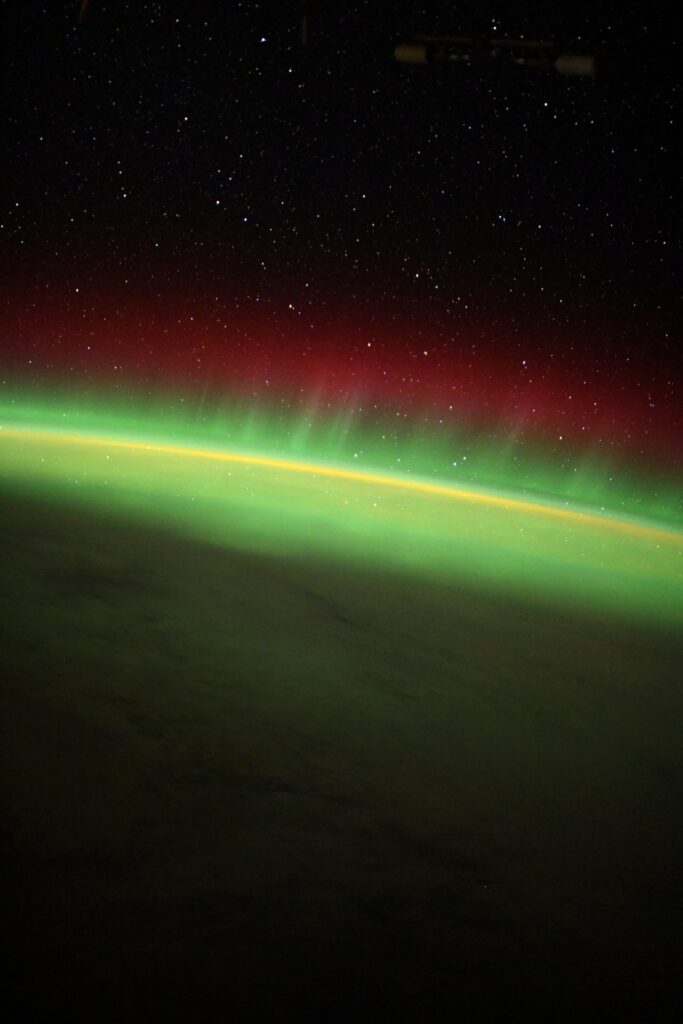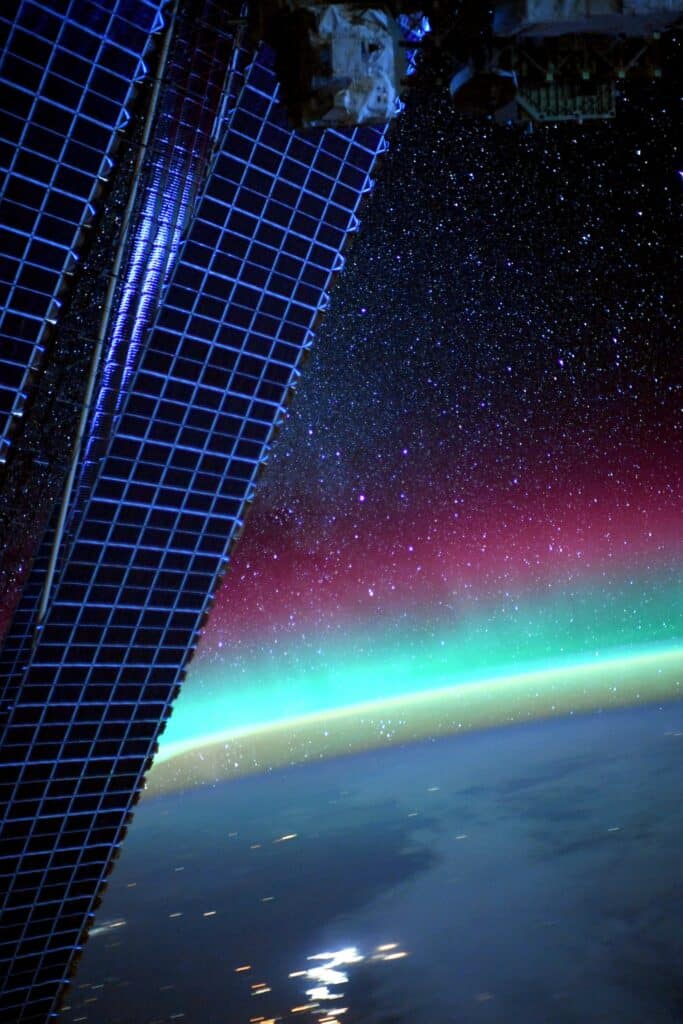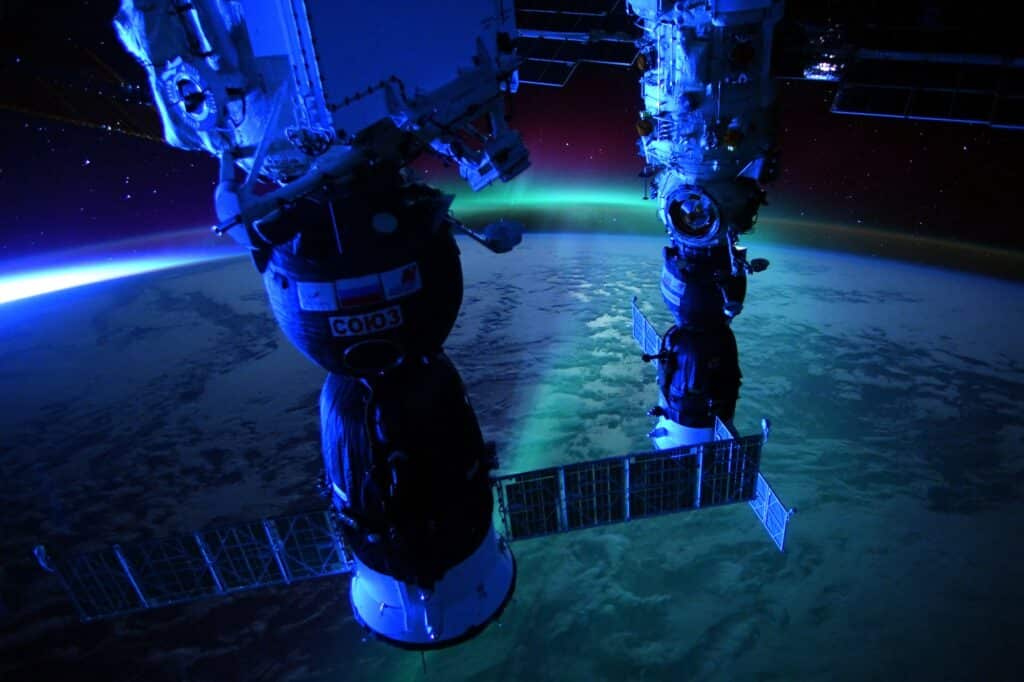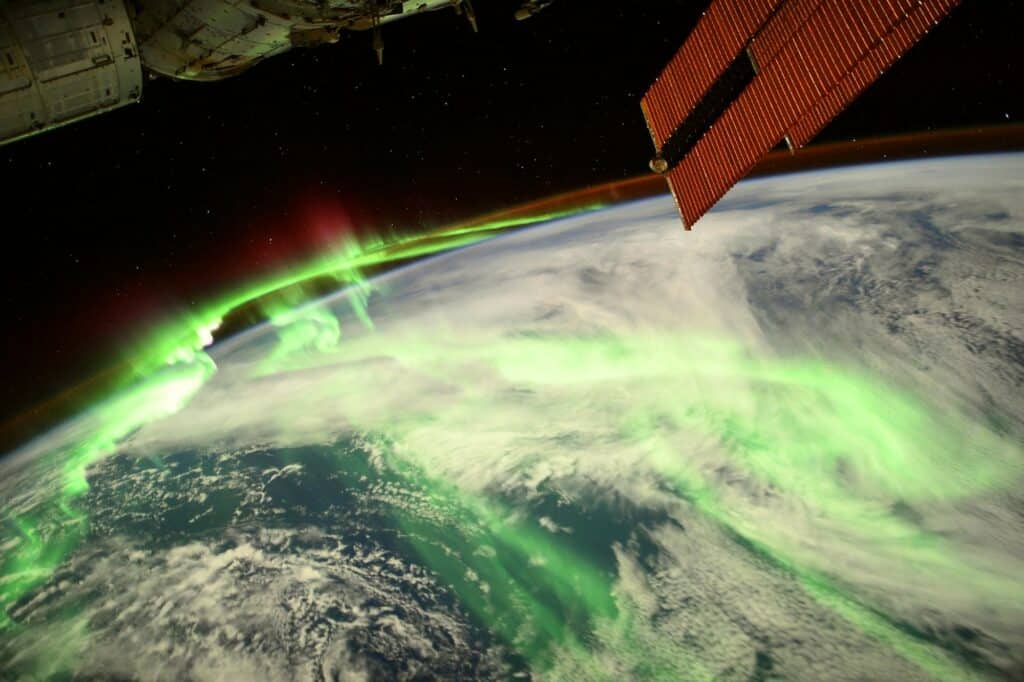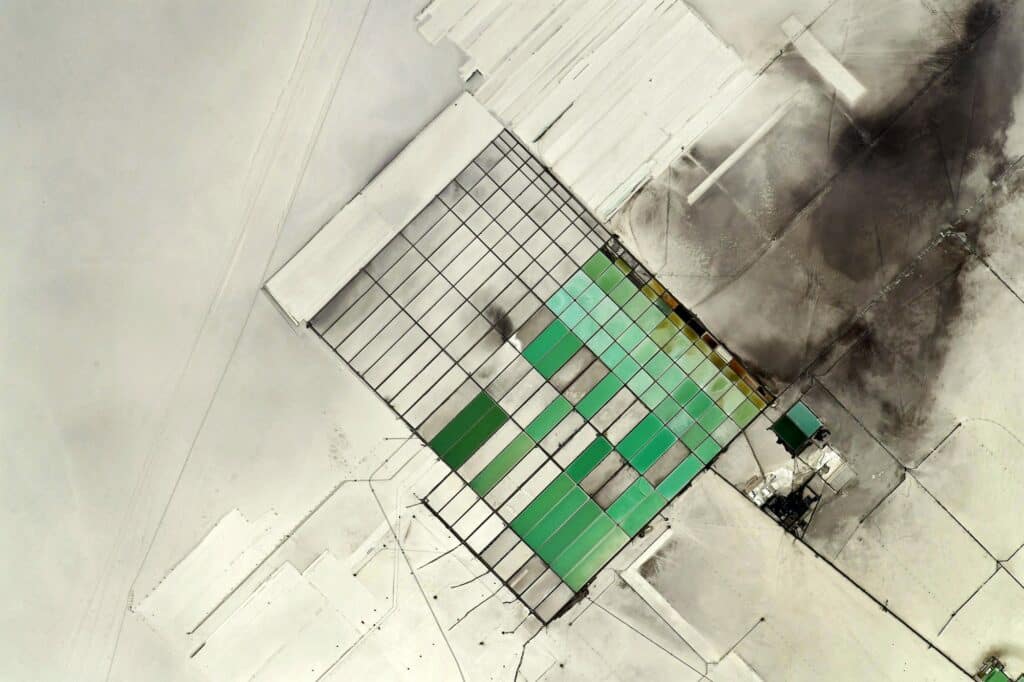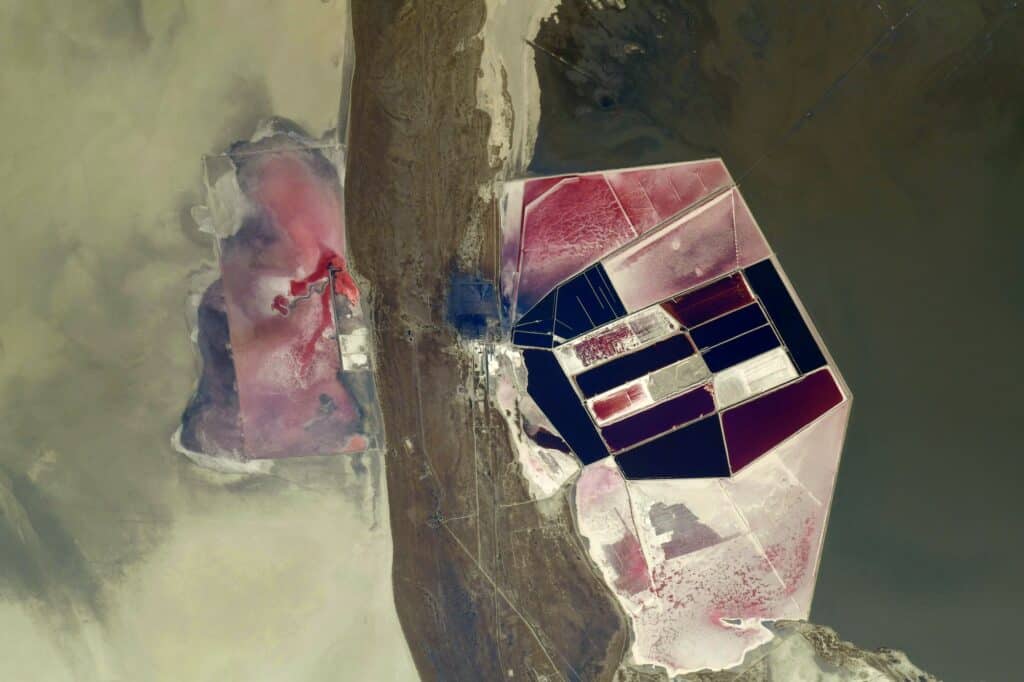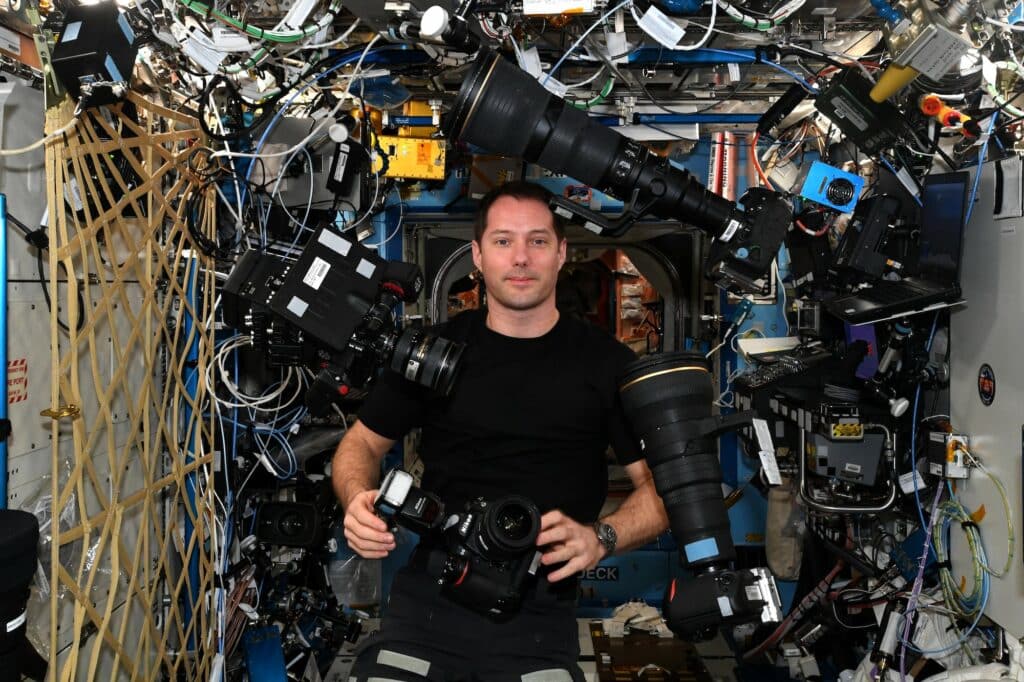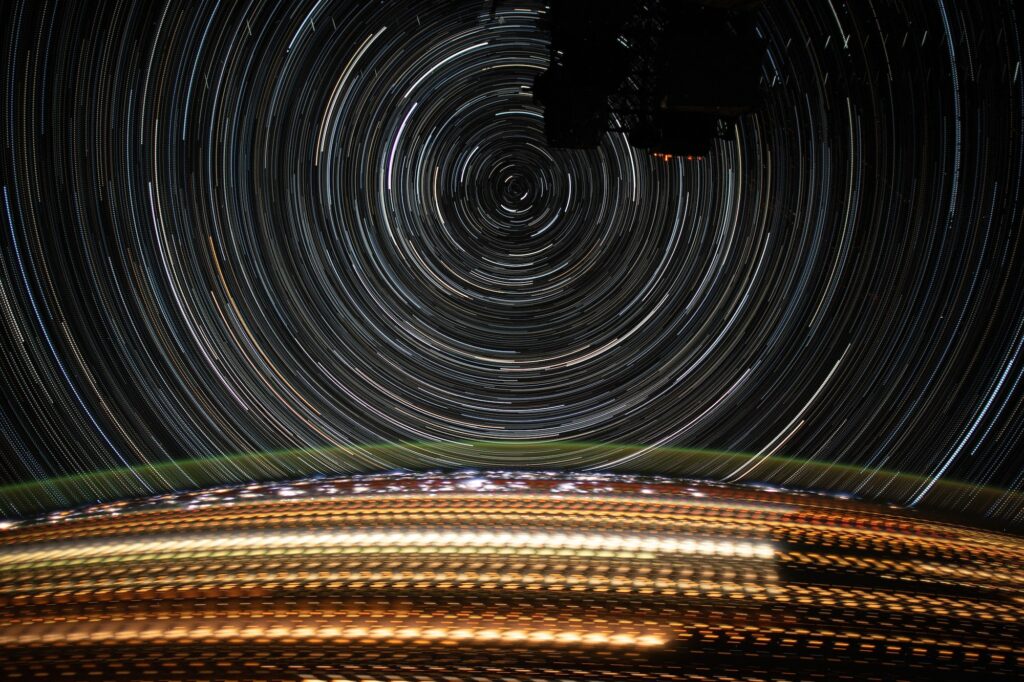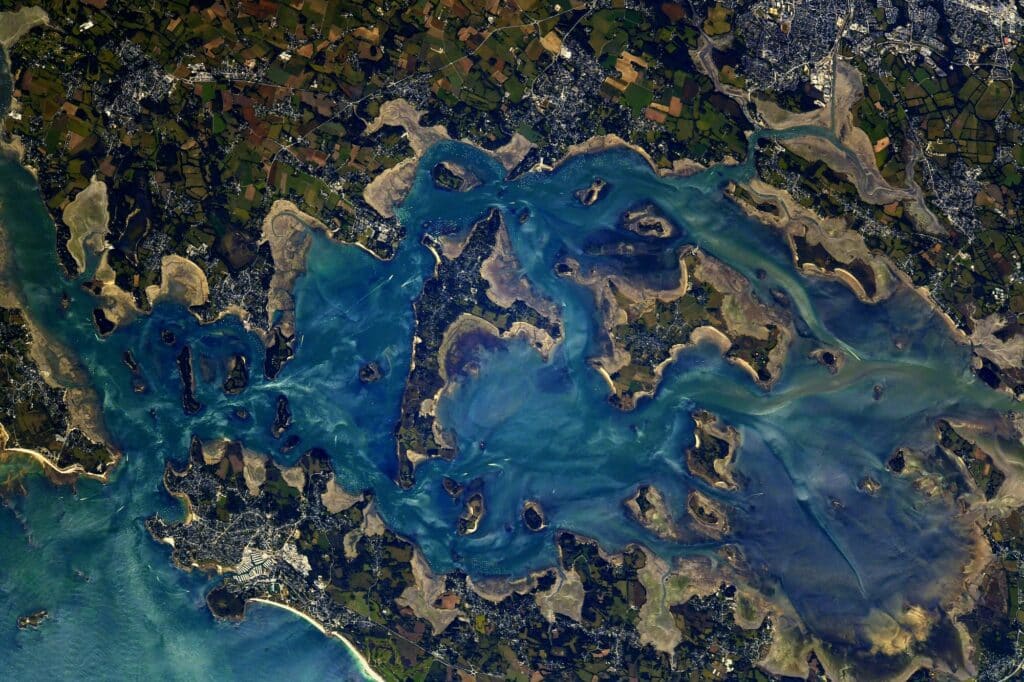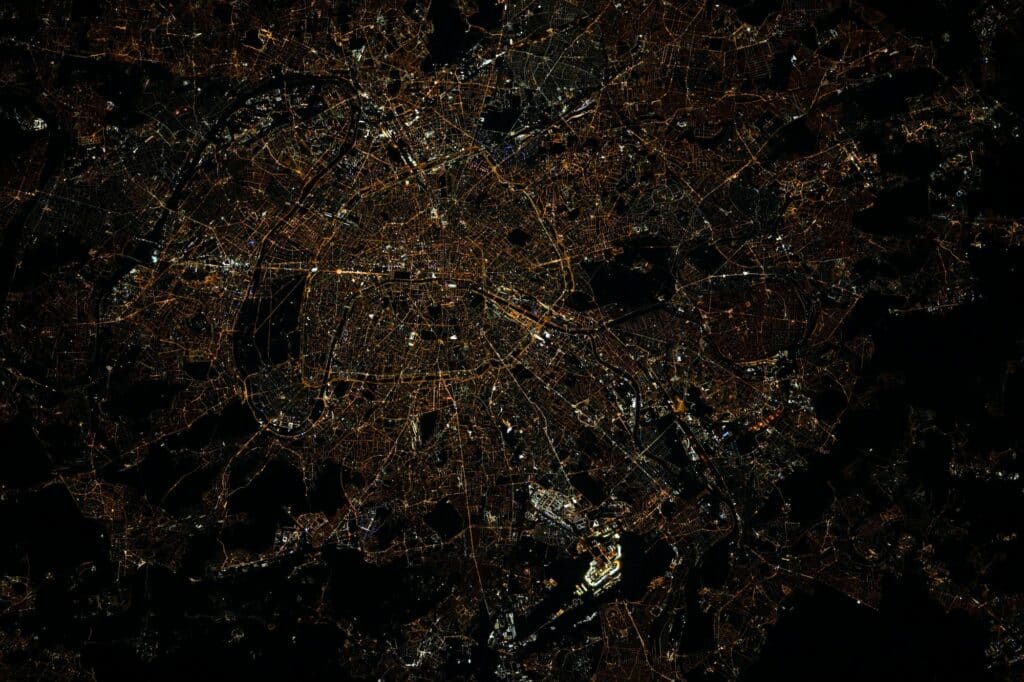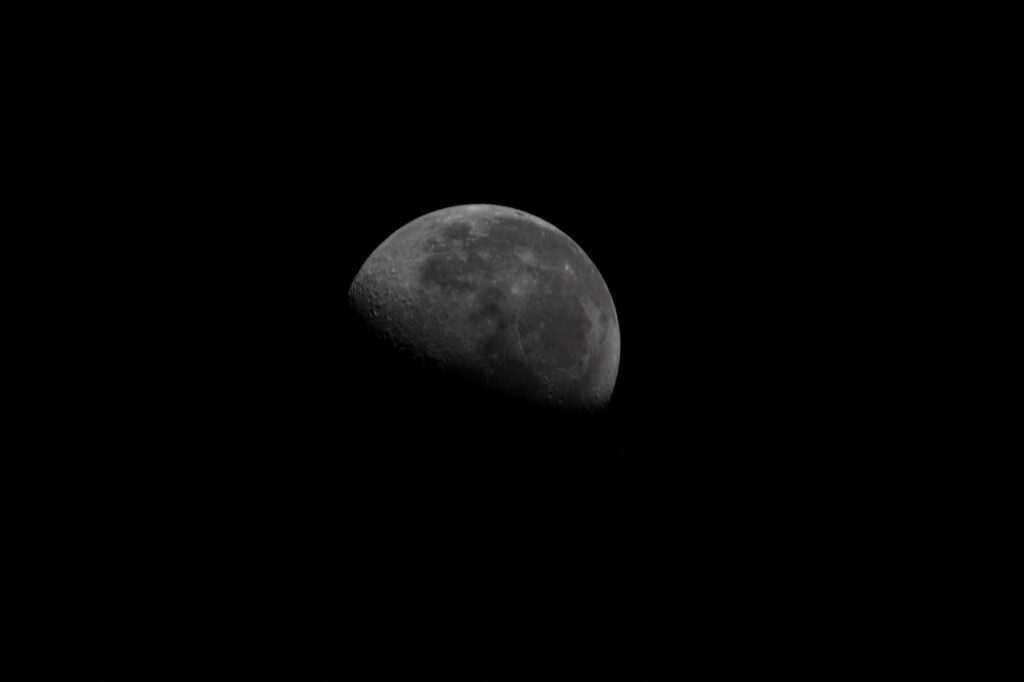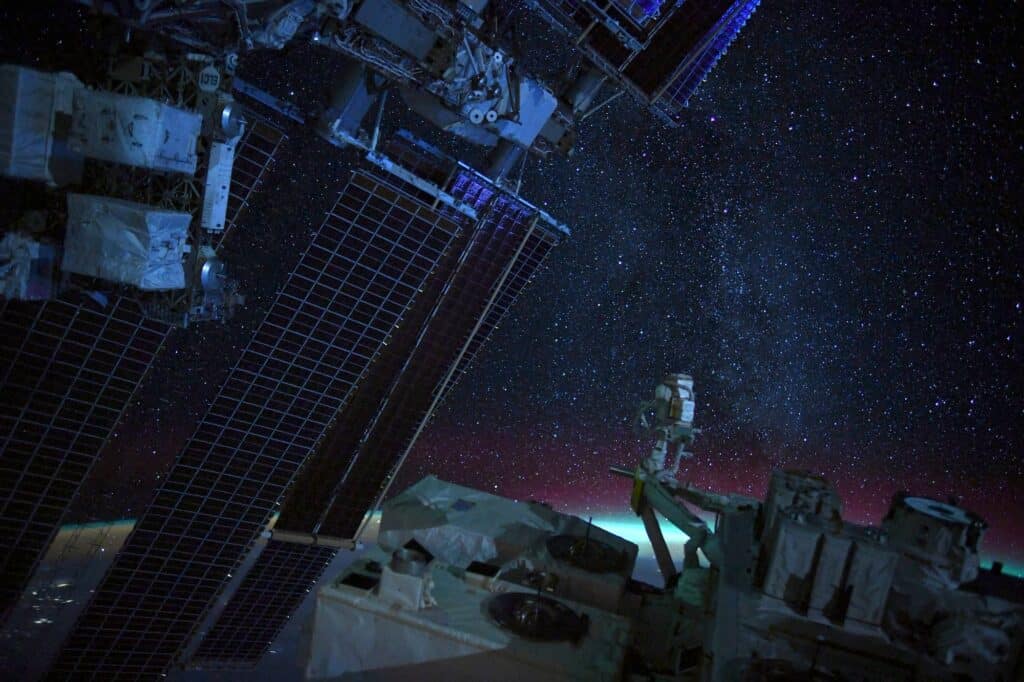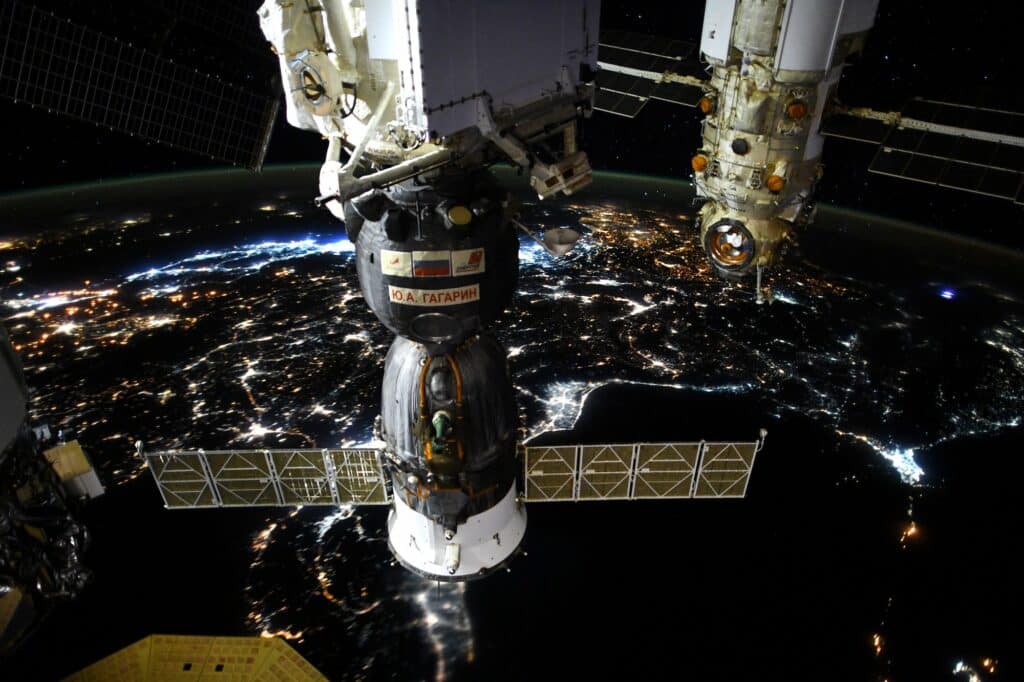Earth, Space, the Moon, Mars…: Thomas Pesquet is present on all planetary fronts as space exploration is experiencing a revival with the Artemis program. He also has a hand in publishing. His new book, La Terre entre nos mains, burst into bookstores in November and is already a year-end bestseller. This is hardly surprising, given the 300 photographic gems picked among the 245,000 he took during the 200 days spent on board the International Space Station (ISS) during its second mission.
The Normandy-native astronaut was literally running circles around us. Nearly 400 pages recount his “extraordinary scientific adventure,” immortalizing the many facets of the blue planet, “the only celestial body within dozens of light years able to support human life.” The book is a captivating and instructive visual and textual experience, soberly put together by Flammarion Editions, with copyrights donated to the Restos du cœur.
As the Earth stirs awake
Pesquet has made millions of Internet users dream thanks to his work communicating and popularizing science from the ISS, where he was the first French commander. A natural teacher, optimistic, modest, and attentive, the forty-four-year-old astronaut and airline pilot from Rouen has brought his weightless universe to his followers. By way of introduction, he admits he had “caught the photo virus” during his first mission, Proxima (2016–2017), a virus that “spread to the crew” during the second mission, Alpha (2021), shared with the Japanese Aki Hoshide and the Americans Katherine Megan McArthur and Robert Shane Kimbrough.
There are various devices installed on board the ISS, in particular in the cupola, the famous panoramic observation window. While photography is not among the astronauts’ explicit objectives, Pesquet has chosen to devote himself to it during his free time, often in the evening and on Sundays.
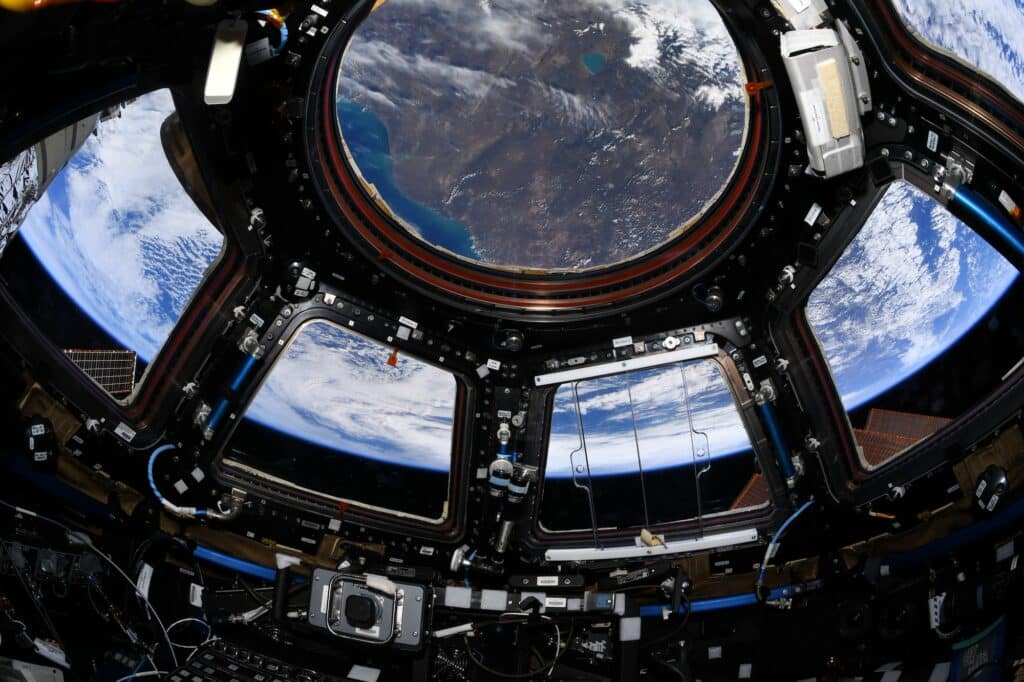
“I really got into it aboard the ISS. I wasn’t a photographer, and I’m not one on Earth, but [I am] in Space,” he explains. “It was important for me to share these photos. I wanted to document what we were seeing from inside the station and to show people the beauty of our planet, as well as its fragility. We are, unfortunately, discovering the increasingly harmful effects of human presence. This book is in part a personal ‘memoir,’ and in part an explanation for the general public. I think that we have a duty of transparency. We are a public service; our research is also intended for regular people.”
Pesquet’s pedagogic approach opens our eyes, moves us, teaches us. He captures the “blue marble” from every angle; he has come to know it “by heart,” exploring its history between past and future, its shapes, lines, and curves, its infinitely varied reliefs, and its palette of incredible, transfixing colors.
Clouds, seas, cities, deserts, mountains, borders, sunrises, and sunsets: simple categories that break down the surface of the planet seen from the distance of 250 miles, during “sixteen phases of light and darkness every twenty-four-hour period.” Pesquet’s book ensnares the reader from the start with splendid auroras caressing the curvature of the Earth plunged into cosmic darkness. Faced with such beauty, the sense of awe of the observer perched in the starry sky is boundless, challenging “anyone to ever get tired of it.”
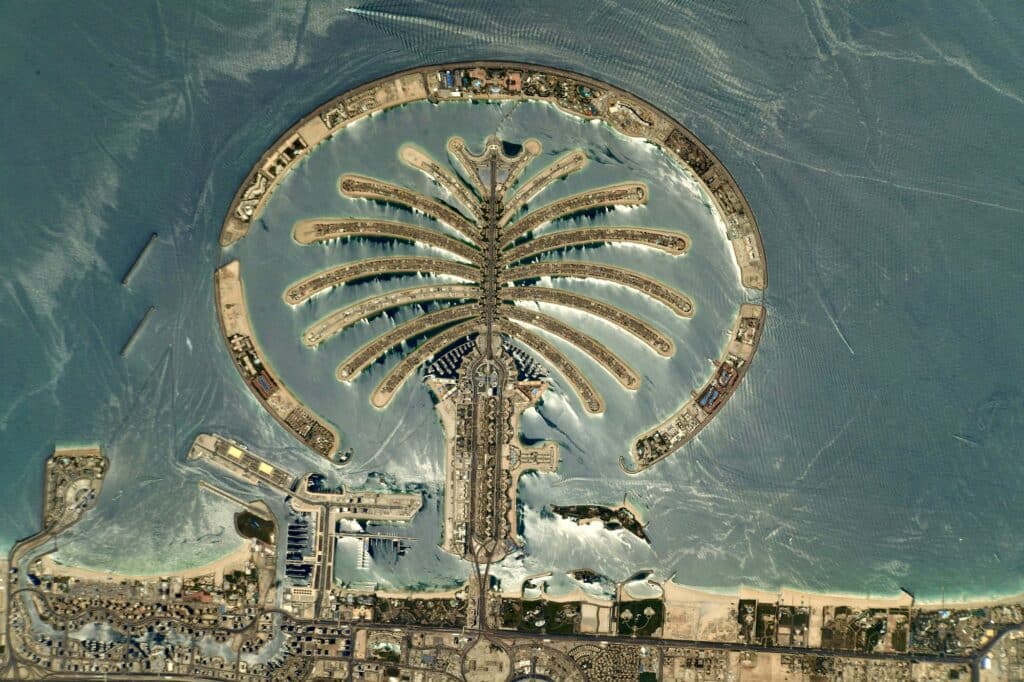
Climate emergency
Pesquet combines scientific research and photographic passion. Yet as he plumbs the grandeur of our “island of life” from space, he also discovers its vulnerability: storms, hurricanes, gigantic fires are clearly visible on the surface. Pesquet records images “that we hate seeing” but which he shares to drive home the message of the planet’s fragility:
“Already during my first mission, we could gauge the urgency of climate change. It’s easy to grasp the disasters on Earth with our intellect, but these are phenomena unfolding on a large timescale and geography which surpass human understanding. In recent years there has been a greater concentration [of these phenomena]. We are increasingly able to feel and see them. These events are becoming more and more powerful: the hurricanes raging in the Gulf of Mexico, the mega-fires that recur every summer. Everything is visible from the space station and it’s deeply distressing.”
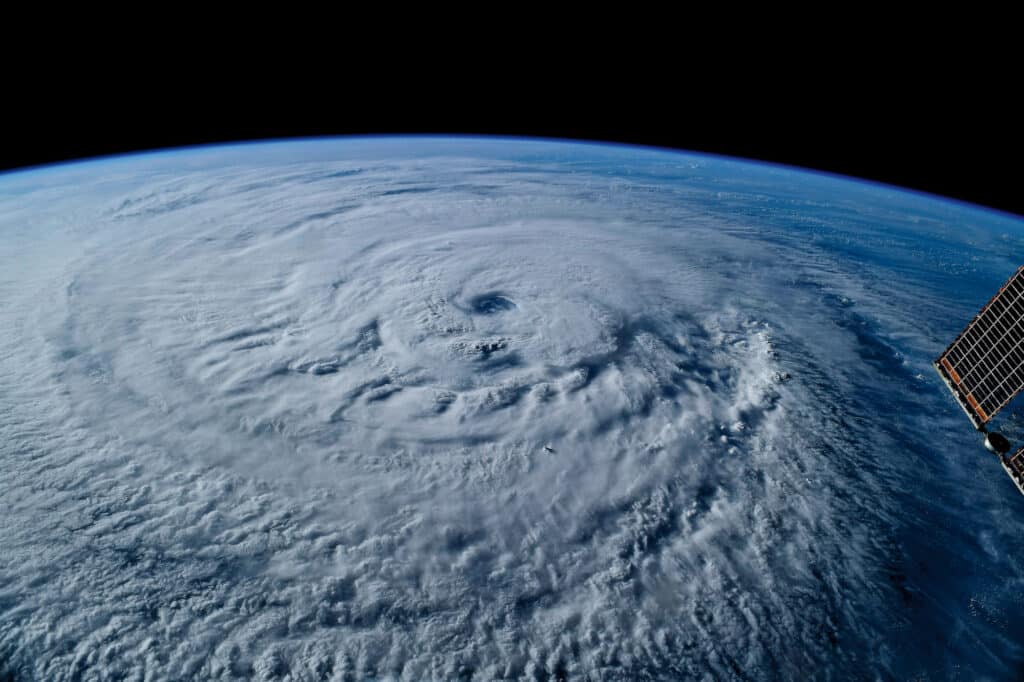
In the caption to an image taken over the Peloponnese, Pesquet reminds us that astronauts are not the only ones to observe megafires. “Satellites provide us with some of the best data-collection and monitoring tools, especially to help rescue efforts in hard-to-reach areas.” Likewise, the sumptuous composite photograph of the Upsala Glacier in Argentina, “serves as a landmark for observing the melting ice and the inevitably rising water.”
Elsewhere, Pesquet immortalizes the eruption of a volcano on the island of Palma in the Canaries, fascinating as it was terrifying. Then again, he captures hurricanes, “more frequent and earlier every year,” and more “destructive than ever.”
“Scientists have proved that the ever-growing frequency and magnitude [of hurricanes] are a direct consequence of global warming,” he wrote, wondering: “How long will our planet, its fragile flora and fauna, and of course the mushrooming population living under this threat, be able to weather these devastating storms?”
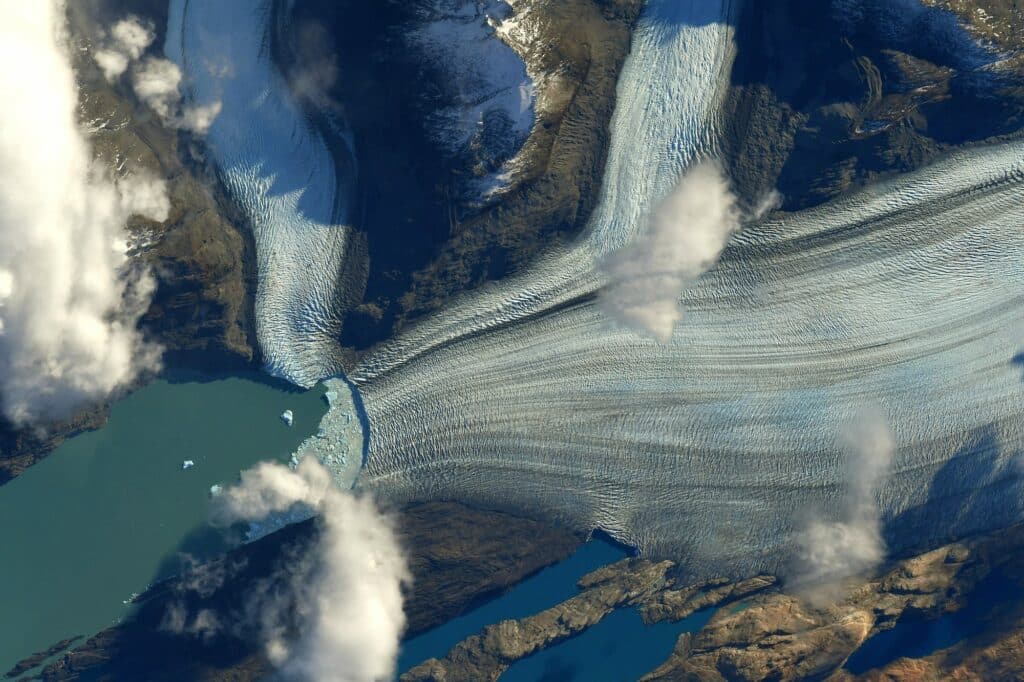
Art seen from space
Commented in this storyteller’s didactic and poetic style, the photographs are in turn moving, disturbing, vertiginous, enigmatic, staggering. More than that, they are pictorial, conceptual, galactic, cartographic; sometimes even retro-futuristic in a synthwave sort of way, notably those capturing fragments of the JEM (Japanese Experiment Module), aka Kibō, framed by the northern lights and the Milky Way. However, what is most eyecatching, page after page, is Pesquet’s artistic vision of the multicolored Earth. “It sometimes seems to me that a journey in a spacecraft allows me to visit the most beautiful museum ever imagined.”
In his previous book, Terre(s), published by Michel Lafon in 2017, Pesquet had already indulged in this approach. La Terre entre nos mains picks it up again, chanting it, magnifying it. Here, “Nature offers an exceptional trompe-l’oeil” in southern Africa; there, “the strange star-shaped patterns” represent crop fields in Bolivia; there again, Cubism visits Mexico; elsewhere, “Mondrian-like grid patterns” appear in the salt marshes in the heart of the Andes, while in southern Kazakhstan, “a strange labyrinth of fluorescent squares that seem to be traced by Daedalus’s hand.”
Farming shows also its allure in the southern United States and Mexico, where “circles and squares are drawn by irrigation channels.” These motifs remind Pesquet of “De Stijl, constructivism, and even aboriginal art,” while in Eastern Europe, the fields take on the appearance of “inlay.” Faced with this geometric patchwork, the French explorer lets his fertile imagination run wild.
Hitting the target
In the course of his photo sessions, posted in his Flickr account, Thomas Pesquet devotes a lot of time to his preparatory work. “I had some basics, and I practiced a lot. I watched what others did, and figured out the parameters of the camera, before finding my way around. I prepared ahead of time, following a precise plan. If I had a particular target I wanted to take, like the Suez Canal for example, because I knew there was a ship stuck there, I would look at the trajectory of the station: Will we pass over in the next few days? What time will it be? If it’s the middle of the night, I won’t be able to see it. If it’s during the day, that could be interesting. And with a slightly oblique light, it would be even better. Everything depends on the trajectory. You can’t get it right every time, but that planning is important.”
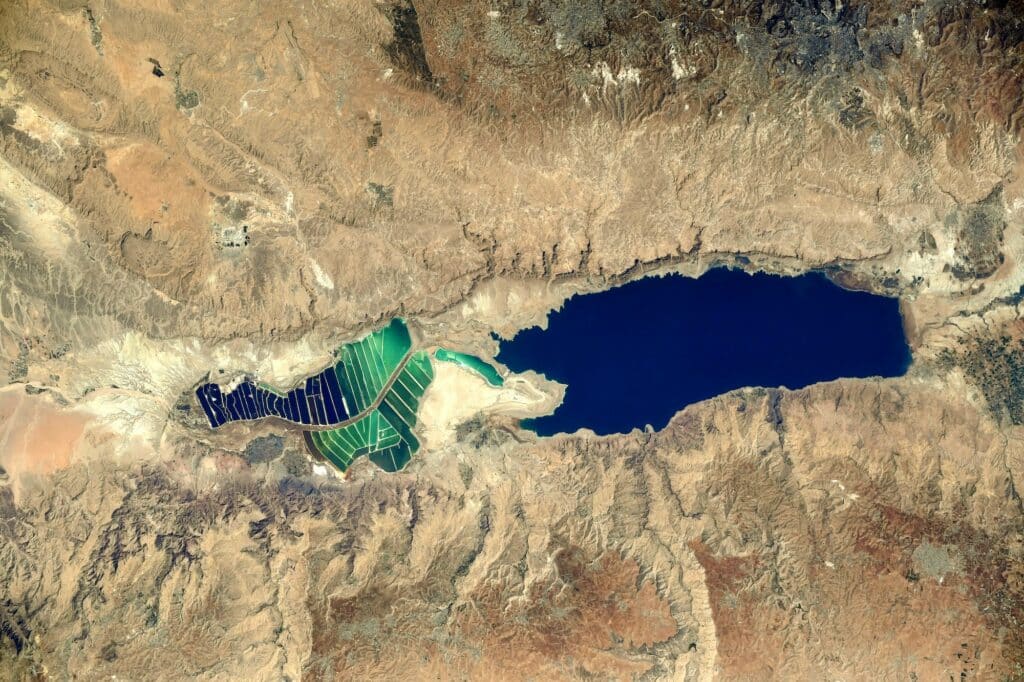
At the heart of his iconographic process is a Nikon D5 and an army of lenses (1150, 400, 70, 140, 290…), enumerated in the appendix. “Night or day shots, the camera stays the same, but the optics are constantly changing,” he says. “I’m always shooting because it’s digital. I do everything on my computer depending on what I want to show. I have, however, created more ambitious images, such as timelapses, stacking, overprints to play with effects, long exposures, etc.”
Take, for example, this hallucinatory image, which captures the illuminated cities of Europe in hyper-acceleration. “The camera took 70 photos, each lasting two seconds,” says the caption. “Stars and city lights move during this time and trace short lines…. When all these photos are stacked…, these lines almost meet to form dotted lines that describe the movement of the sky vis-à-vis the Station. … Hypnotic!”
The first Frenchman on the Moon?
The book concludes with France, its regions, overseas territories, islands, mountains, its dunes, and the City of Light with its nocturnal spiderweb. It showcases landscapes of one of the most geographically diverse countries in the world and allows for a return home before a possible future lunar adventure.
When asked why space still fascinates him, this dreamer of moonwalks answers in one breath: “Because it represents something beyond us. Today, everything is almost on the scale of humans on the planet. We can move around very quickly; the Internet allows us to know what is happening anywhere in the world. These advances, brought within our reach, give us the impression that nothing is unattainable. And to dream, we need an ideal that inspires us. In the history of humanity, the exploration of the Earth has been part of this component of human desire. Some ideologies have inspired crowds because they carry them away. Today, everything is on an individual scale. But to go to places impossible to see, to cover this distance that we cannot imagine, to discover nebulae and the gems of the James Webb mission, that’s incredible poetry! The attraction, the lure is there. This is even more true in the twenty-first century, because we have the technological means to share these discoveries. People have been able to realize this with my various missions aboard the ISS.”
This fascination came into play last November 21 with images from NASA’s Orion capsule: “It circled the Moon and captured for the first time its hidden side, the one we have never seen. As it rotates around the Earth and around its own axis, the Moon always presents the same side. In the end, we don’t know what’s on the other side, even with probes put in orbit around the satellite. Orion managed to give us pictures, with the Earth in perspective. It is absolutely stunning! This is why Space has always fascinated people, because it is useful to society. And today, we can get ever closer to it.”
Since the launch of the Artemis program, whose objective is to establish a lasting human presence on the Moon and in lunar orbit by the end of the decade, the possibility of the French astronaut being selected is on everyone’s lips: “In space, the situation change quickly. But today, Europe is really committed to the Artemis mission. The ESA [European Space Agency] provides a critical part because the Americans cannot go without us technologically. This gives us a voice. We are talking about three places for Europeans by 2030, for the most part people from my age group. And since there are six of us in total, that’s a 50/50 chance. But I don’t make that kind of calculation. I just tell myself that I am in the right place at the right time. We have to do the job and we hope that everything goes well.”
La Terre entre nos mains, Thomas Pesquet, Éditions Flammarion and ESA, 416 pp, 39 €, Novembre 2022.
